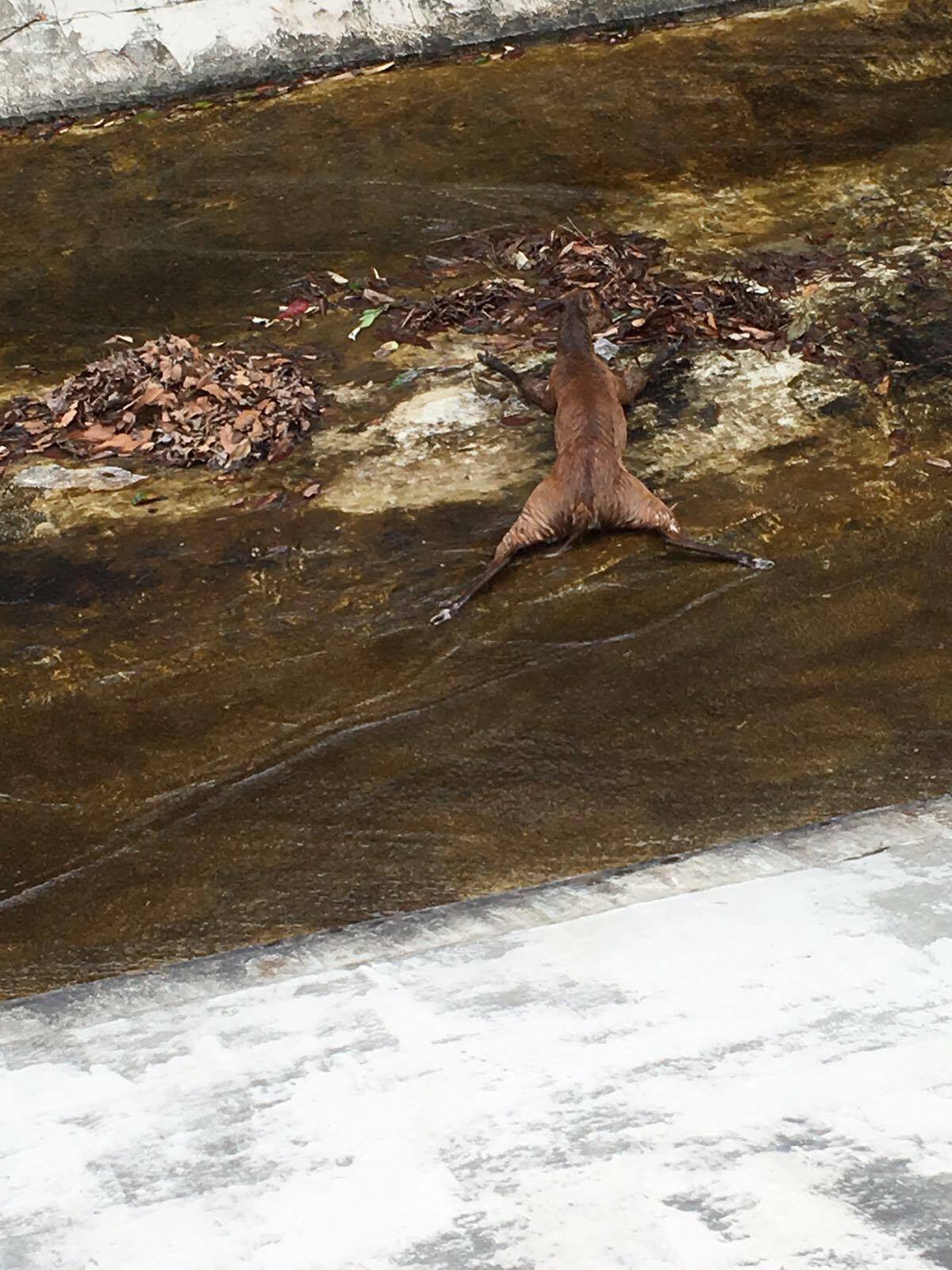Frightened to death?
The Northern Red Muntjac (Muntiacus vaginalis) sometimes known as the Barking Deer is the only native deer species that is found in Hong Kong. It is also a mammal species we often receive at the Wild Animal Rescue Centre. Common causes of injury to these deer include dog attack, injuries from falling into catchwaters, entrapment in roadside railings and impacts with cars. Rehabilitation of barking deer is very challenging, in many cases, the injury itself is not the major cause of death for the rescued deer. A fatal, untreatable, stress-induced condition called ‘capture or exertional myopathy’ is frequently the reason that leads to treatment failure and death for many rescue cases.
Capture or exertional myopathy is a condition that happens in some mammals when they are extremely stressed. It is named “capture myopathy” as it is usually triggered when wild animals (particularly hoofed mammals) are being chased and captured by predators. The condition involves a complicated chemical reaction in the muscles of the deer that cannot be reversed, leading to shut down of major organs and death. Although capture myopathy can be induced naturally when the animal is chased by natural predators, these events are often of short duration and may not reach a level which triggers myopathy. In rescue cases, prolonged human proximity and handling increases the probability of triggering myopathy as these timid wild animals are not used to having close interaction with humans.
Symptoms of capture myopathy include a drastic increase in heart rate and body temperature, muscle stiffness, paralysis and excretion of dark-red colored urine. In some cases, animals suffering this condition may die within hours (acute myopathy) or they may die days or even weeks after the event (chronic myopathy). The deer are literally “frightened to death” as the title suggests.
Barking deer are particularly susceptible to capture myopathy as they are known to be very shy and are stressed very easily. As capturing and handling of the animals cannot be prevented during rescue, capture myopathy is a concern. Even experienced wildlife rehabilitators cannot guarantee the success of each rescue case. Keeping the animal calm and minimising stress during the rescue and rehabilitation process is a big challenge that professional wildlife rescuers and rehabilitators face. This is one of the reasons why rescue and rehabilitation of wild animals and particularly deer should only be performed by trained and authorised wildlife rescuers with knowledge of the myopathy risk.
So what can we do when we encounter an injured barking deer?
- Contact the SPCA hotline 27111000 or AFCD 1823 as soon as possible.
- Please remember that minimising the disturbance and interaction with the deer is very important in reducing its stress level. Reducing stress greatly increases the chance of survival during the rescue and rehabilitation process by limiting the chance of capture myopathy.
- Do not get too close to the injured animal as that adds stress. The deer is already under stressed due to the injury. Approach only for essential actions and then back away out of the deer’s view.
- Never try to have any physical contact with the deer, such as touching and patting. It can be dangerous for both deer and humans.
- Photos should only be taken from as far from the deer as possible without the use of flash.
- Keep the area quiet, human voice, vehicle noise and other human created sounds (e.g. mobile phone ring tones) add to the stress. Wait quietly at a distance for the wildlife rescue team to arrive.
- Alert other people not to get close to the injured deer.
- Without risk to your own safety, if you feel the deer cannot move and appears exhausted due to hot weather, it can be covered with a wet towel to assist cooling (overheating is a major contributor to the onset of myopathy) and cover the head until the SPCA or AFCD arrive to rescue the animal.

Barking deer trapped in a catchwater awaiting rescue. Please do not attempt to save the animal by yourself as maintaining minimal disturbance and reducing stress to the animal relates to its eventual survival chances. Rescue of wild animals should only be performed by trained wildlife rescuers. Photo: Kathleen Daxon
%20(1).jpg)
%20(1).jpg)
Unlike Sasa and Didi, the orphaned barking deer at KFBG that were hand raised, wild barking deer are more sensitive and shy. Capture myopathy can be easily induced when the wild deer are handled by humans.
A fortunate young deer following successful rehabilitation was released back to its natural habitat in the wild. Rescue and rehabilitation of barking deer is very challenging and requires professional animal care knowledge. After appropriate care we are fortunate to have many successful rehabilitation cases leaving our Wild Animal Rescue Centre. (Please see the attached video.)

